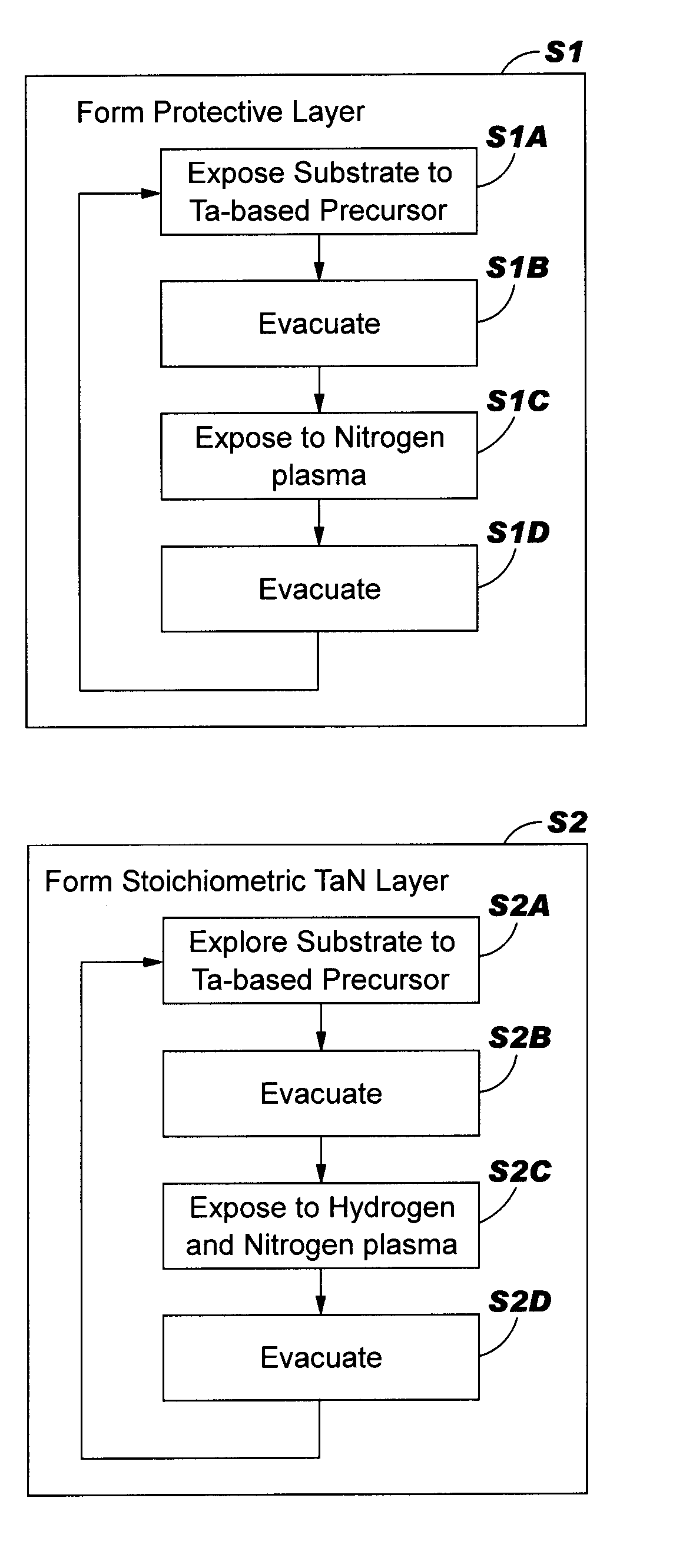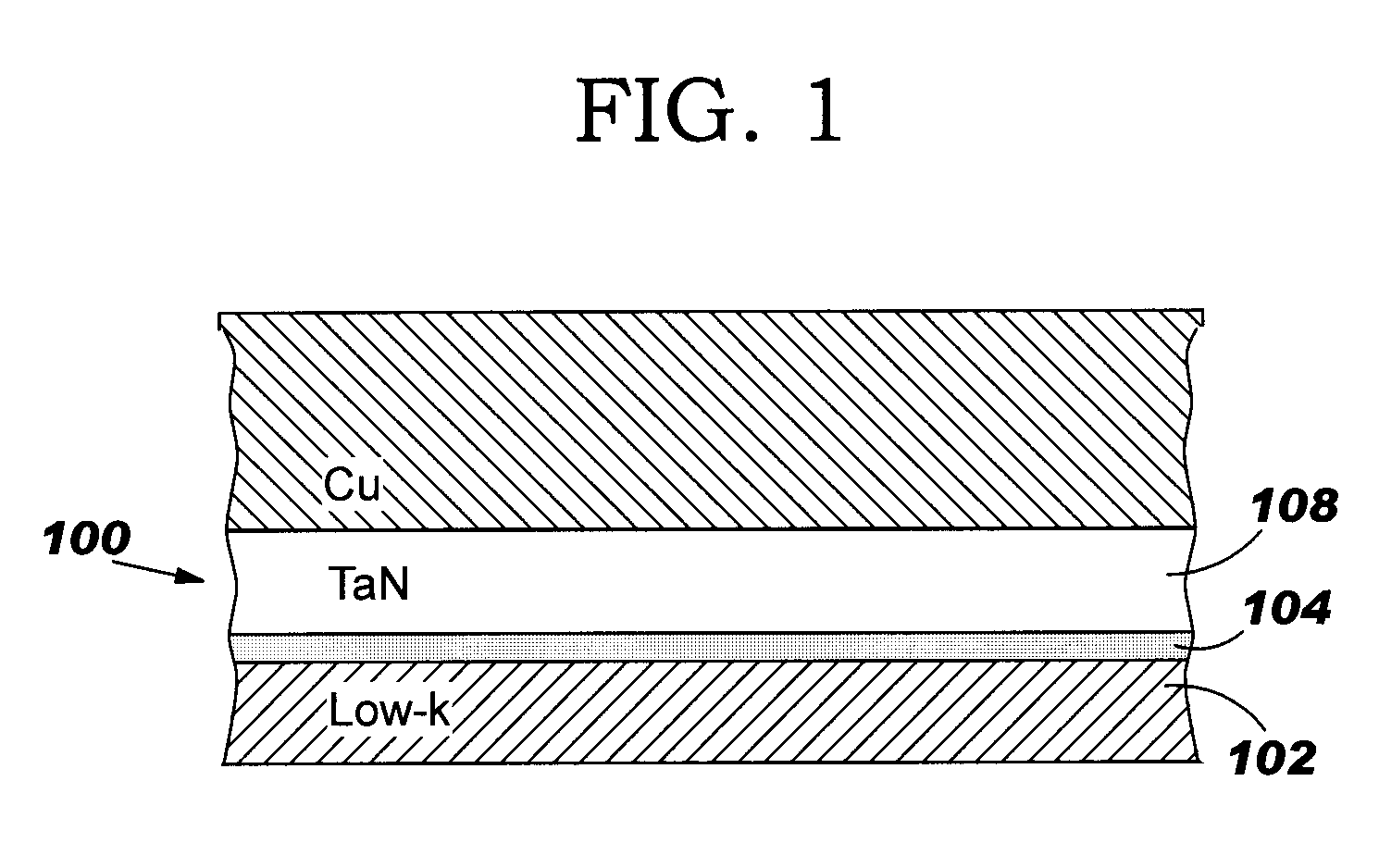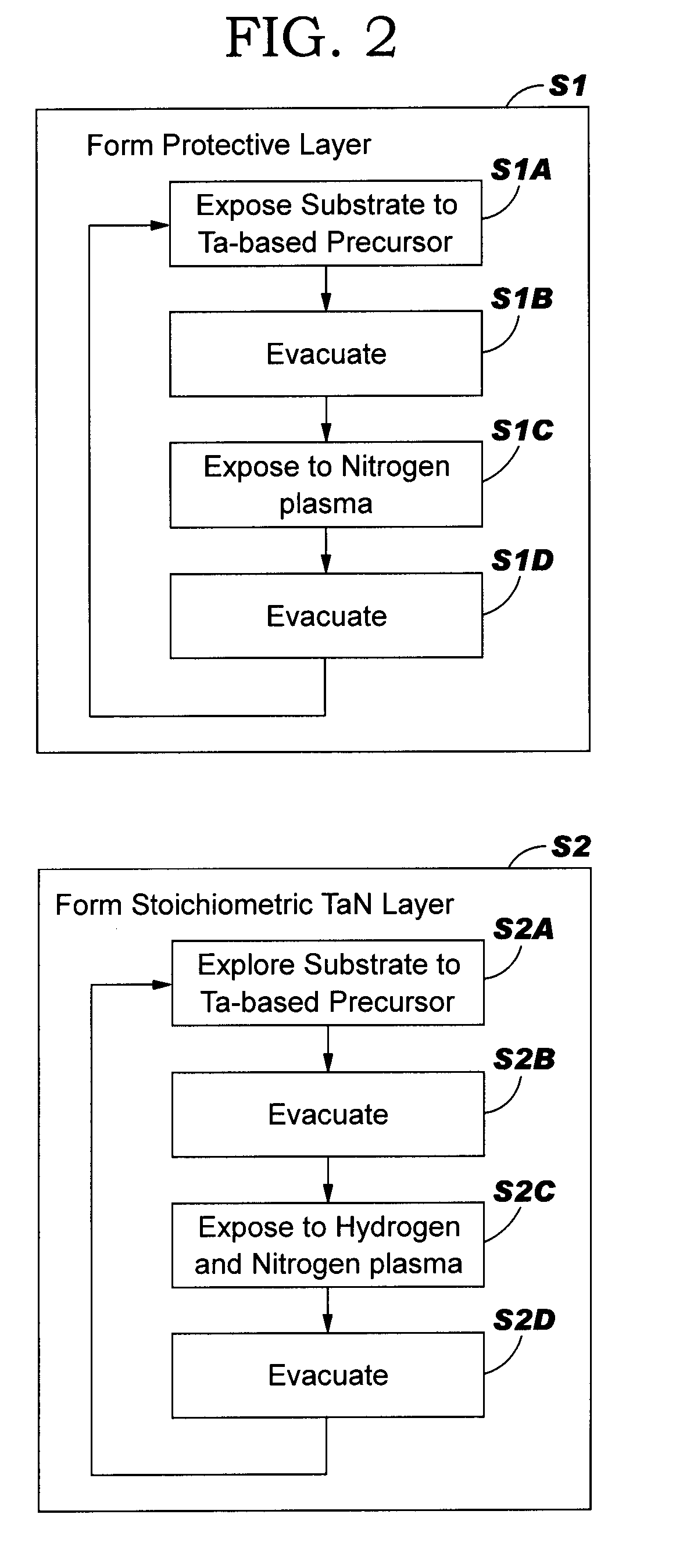PE-ALD of TaN diffusion barrier region on low-k materials
a diffusion barrier and low-k material technology, applied in the direction of semiconductor/solid-state device details, electrical equipment, semiconductor devices, etc., can solve the problems of contaminant incorporation, poor conformality of pvd technique, and potential reaction between precursor and substrate materials
- Summary
- Abstract
- Description
- Claims
- Application Information
AI Technical Summary
Benefits of technology
Problems solved by technology
Method used
Image
Examples
Embodiment Construction
[0018]Referring to the accompanying drawings, FIG. 1 illustrates a tantalum-nitride (TaN) diffusion barrier region 100 for use with a low-k material 102 according to the invention. Barrier region 100 includes: a protective layer 104 including a TaN material having a nitrogen content greater than a tantalum content adjacent low-k material 102; and a subsequent substantially stoichiometric TaN diffusion barrier layer 108 adjacent to protective layer 104. As will be described further below, there is substantially no reaction between low-k material 102 (e.g., SiLK) and protective layer 104, resulting in a very smooth and sharp interface. In addition, protective layer 104 successfully prevents the interaction of atomic hydrogen (H) with the SiLK layer 102 during the later formation of substantially stoichiometric TaN layer 108, and allows layer 108 to be successfully grown even on low-k material (e.g., SiLK) 102.
[0019]Turning to FIG. 2, a flow diagram of a method of forming a high nitrog...
PUM
| Property | Measurement | Unit |
|---|---|---|
| temperature | aaaaa | aaaaa |
| diameter | aaaaa | aaaaa |
| temperature | aaaaa | aaaaa |
Abstract
Description
Claims
Application Information
 Login to View More
Login to View More - R&D
- Intellectual Property
- Life Sciences
- Materials
- Tech Scout
- Unparalleled Data Quality
- Higher Quality Content
- 60% Fewer Hallucinations
Browse by: Latest US Patents, China's latest patents, Technical Efficacy Thesaurus, Application Domain, Technology Topic, Popular Technical Reports.
© 2025 PatSnap. All rights reserved.Legal|Privacy policy|Modern Slavery Act Transparency Statement|Sitemap|About US| Contact US: help@patsnap.com



